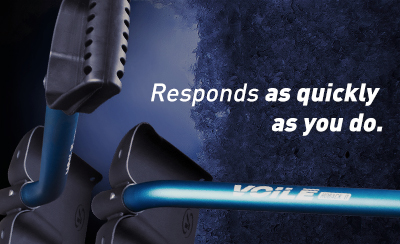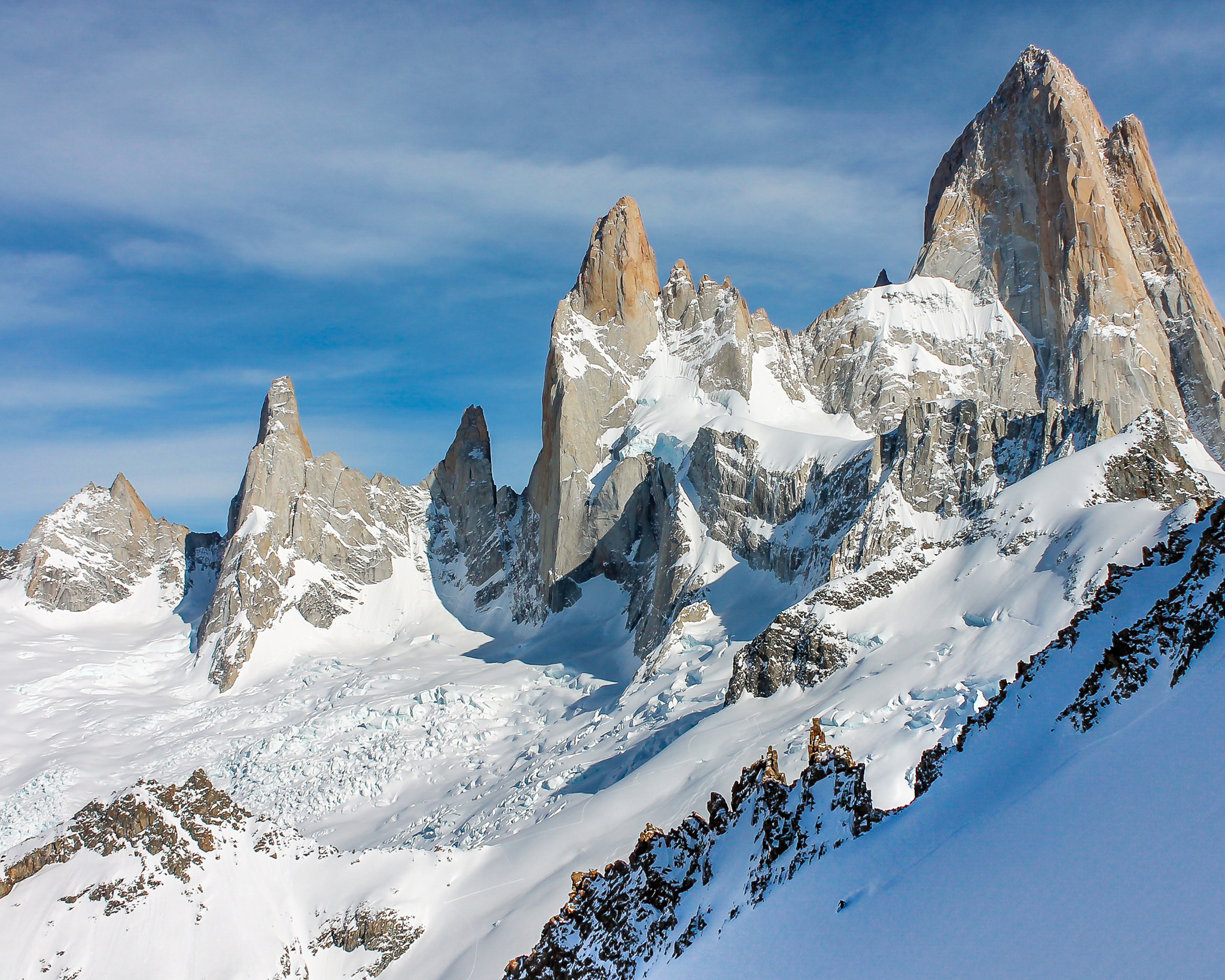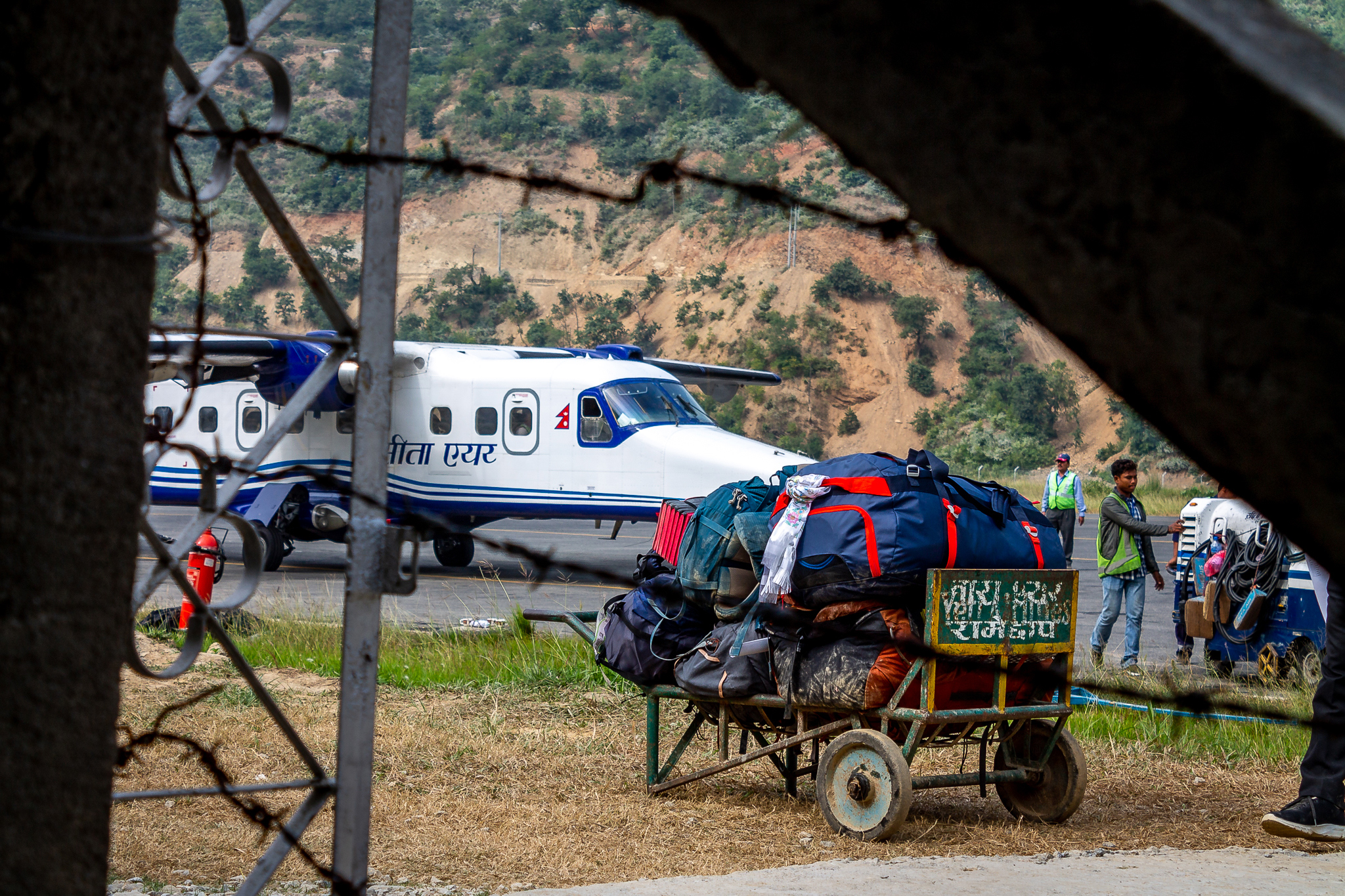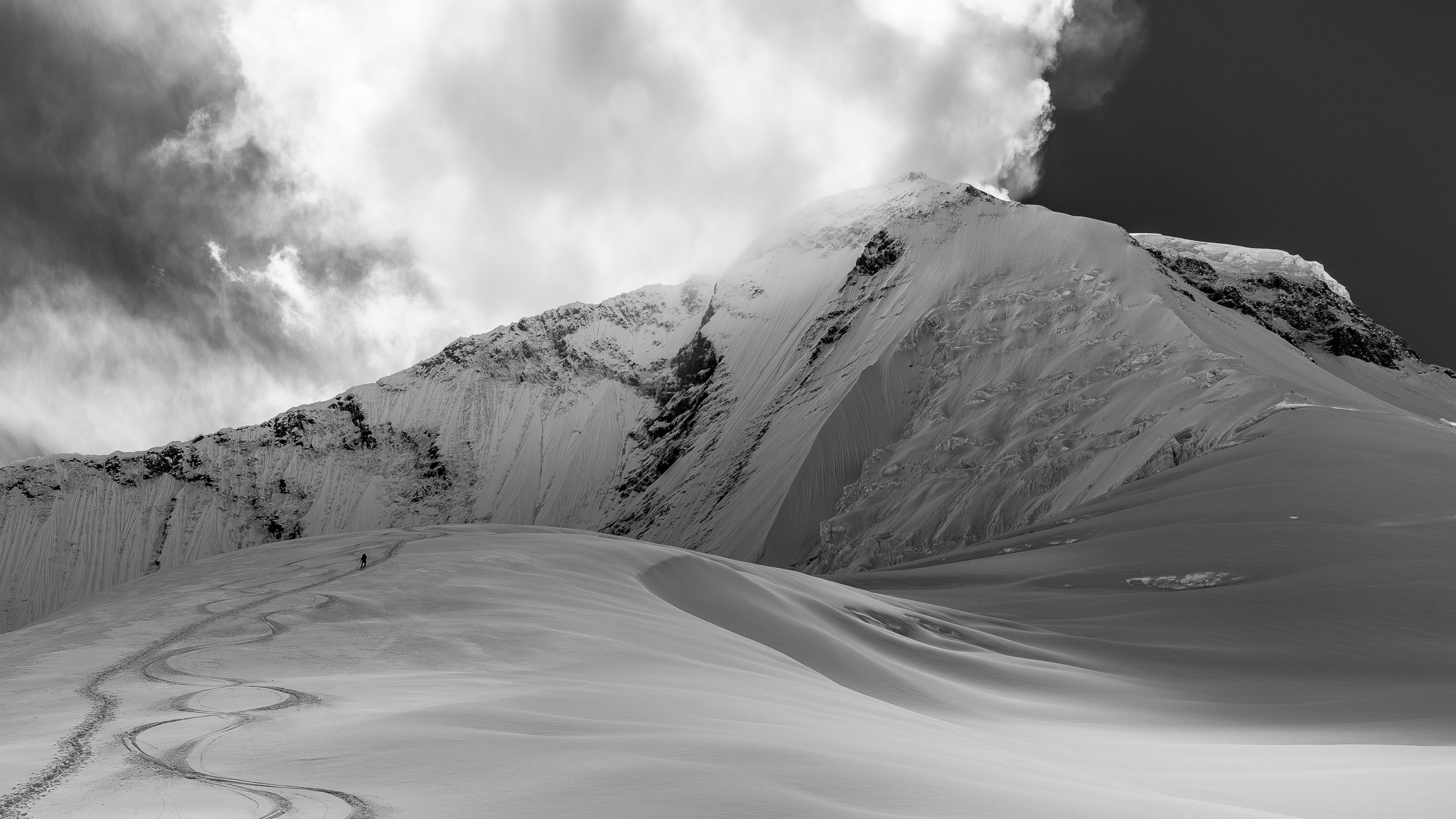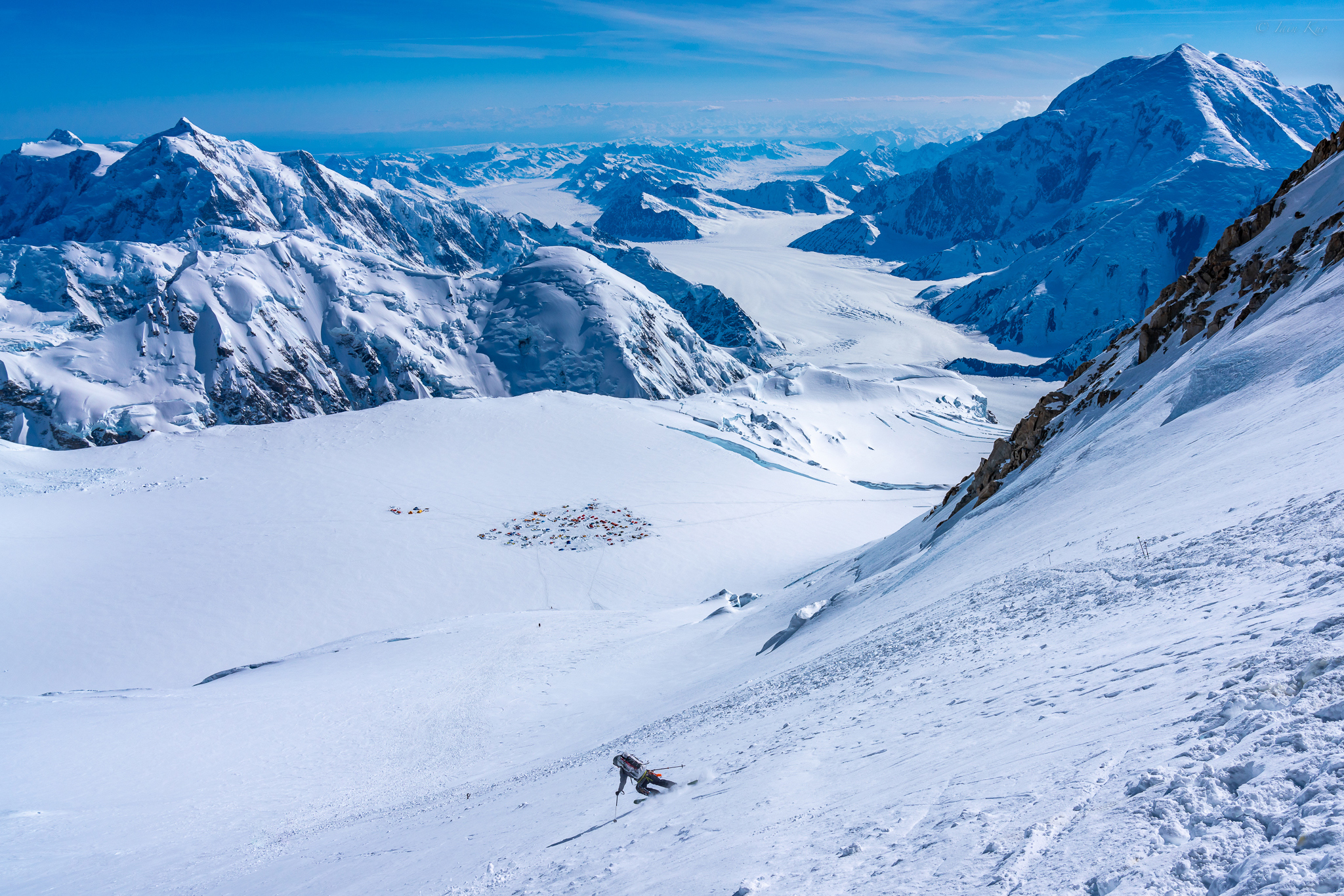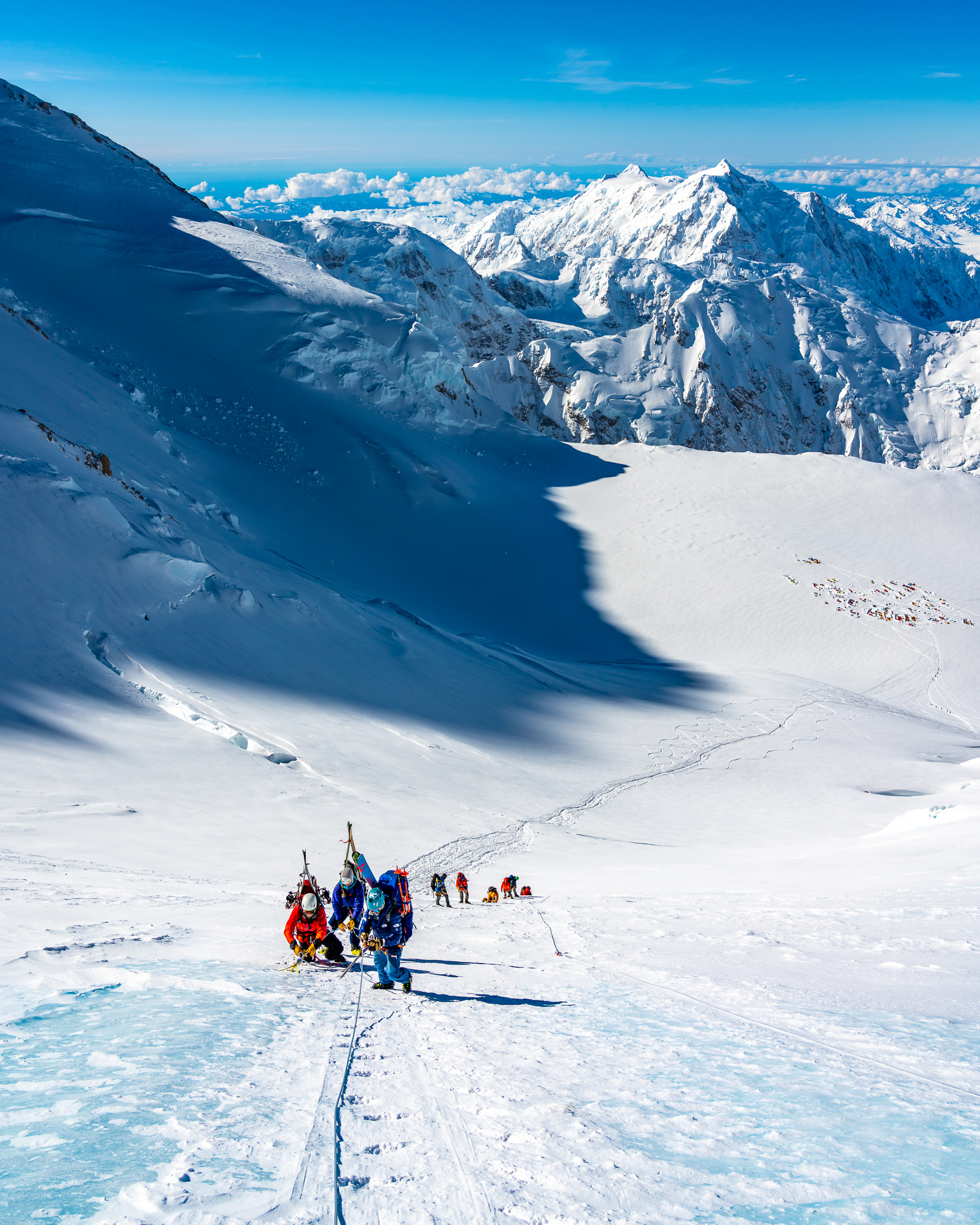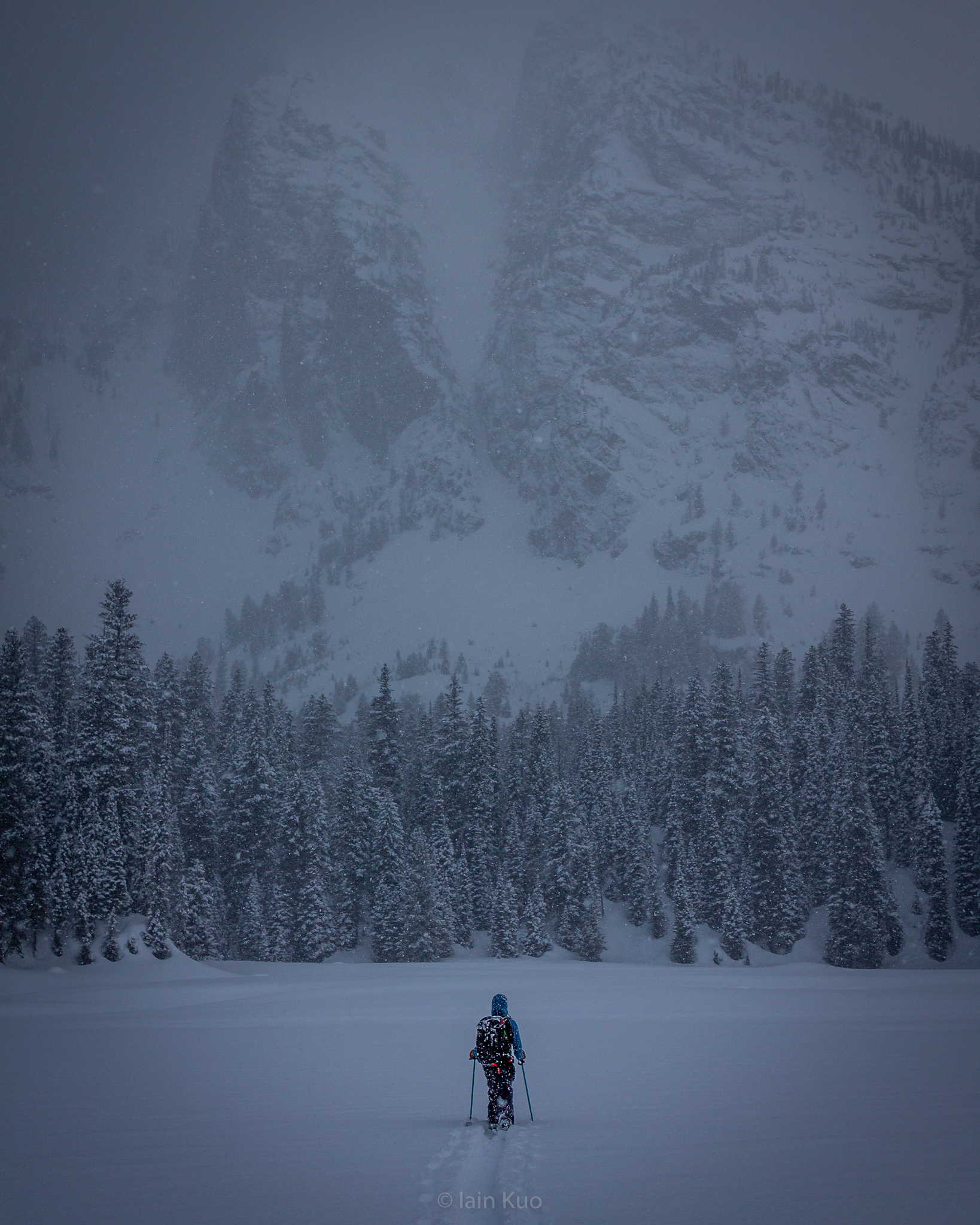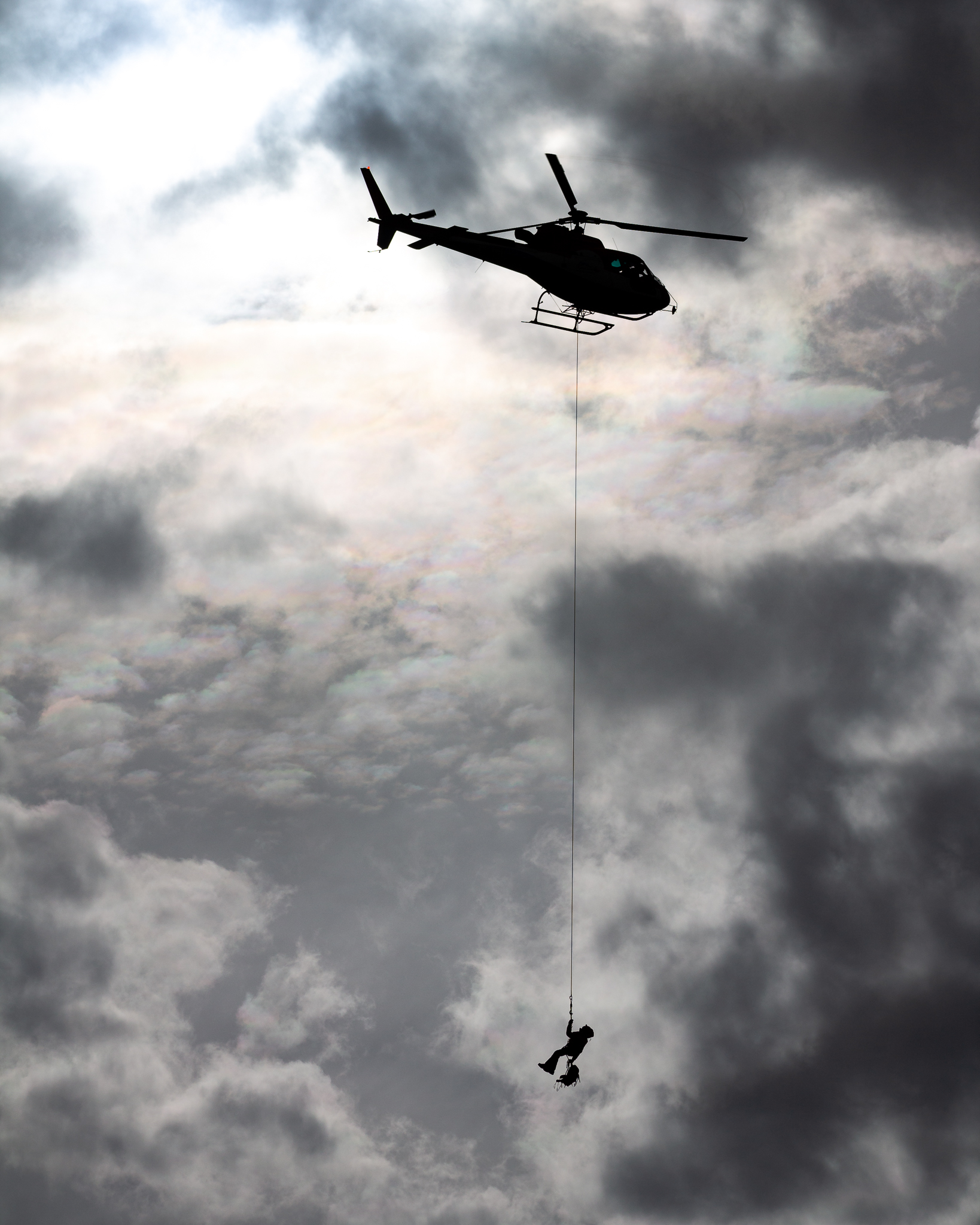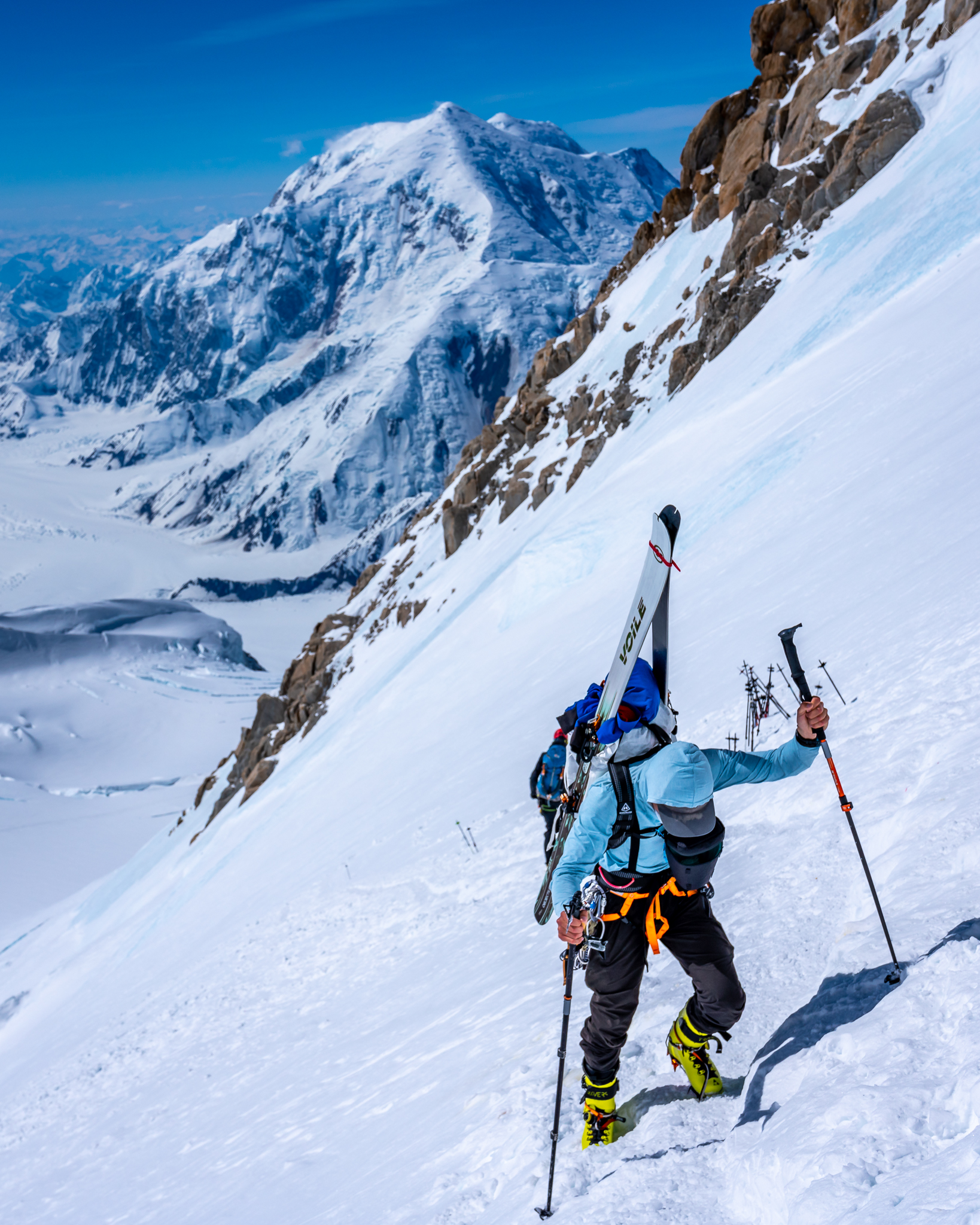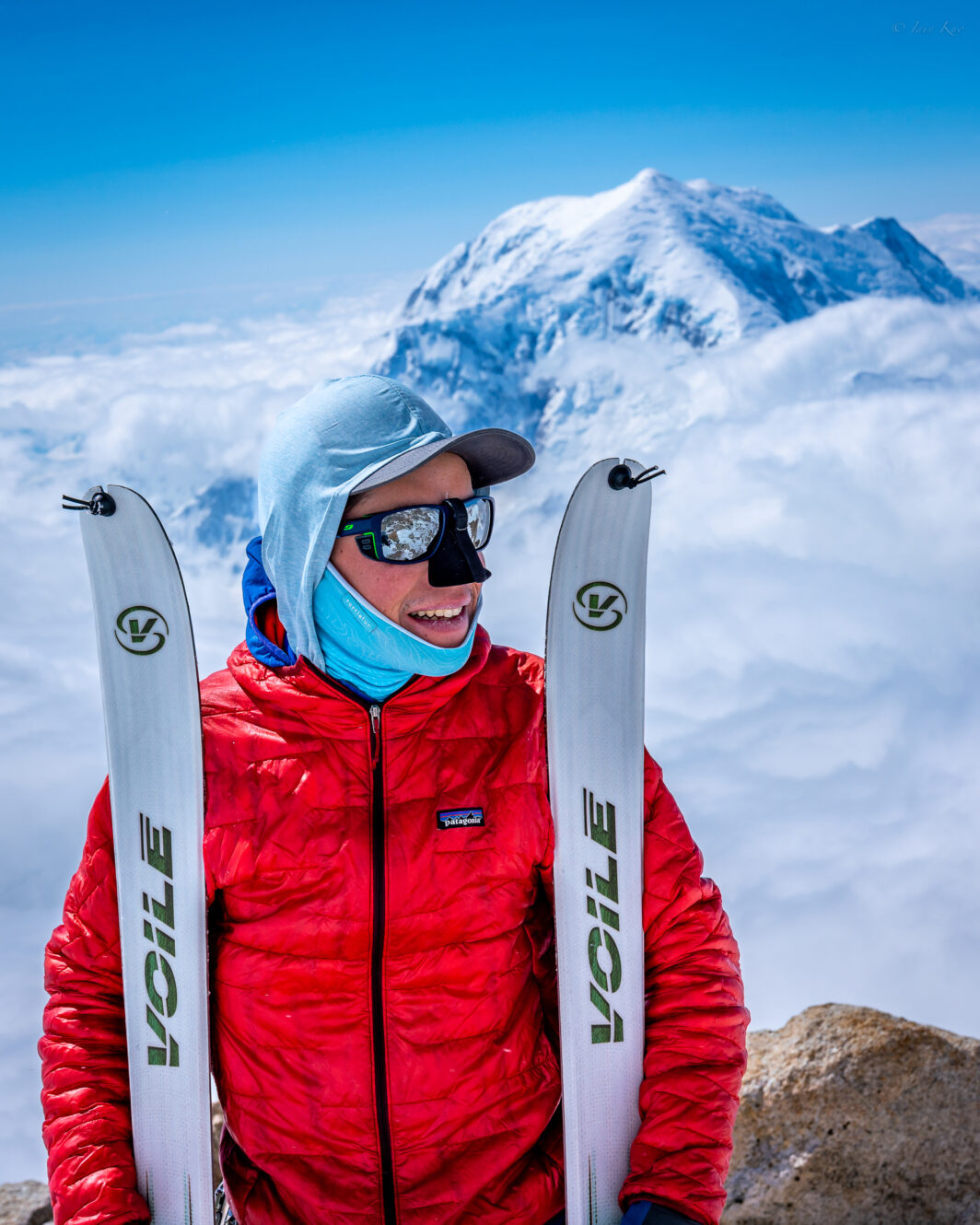
How to (finally) Plan Your Dream Ski Expedition.
Share this Post
V-Team ambassador Iain Kuo shares experience from previous ski expeditions to destinations around the globe that will help you execute in style, from the airport to the summit. Here are Iain’s pro tips to help you plan your dream ski expedition.
If you’ve been dreaming of high peaks in remote places, thirsting to take your skis to another continent, planning to spend weeks in a tent while pursuing that dream line, or working on stepping up to that intimidating high altitude objective, it’s a bit more complicated than catching the bus to the ski resort. You may say to yourself, “I’m getting ready to ride lifts and shralp pow here in North America. Why should I be thinking about this now?” The answer is twofold.
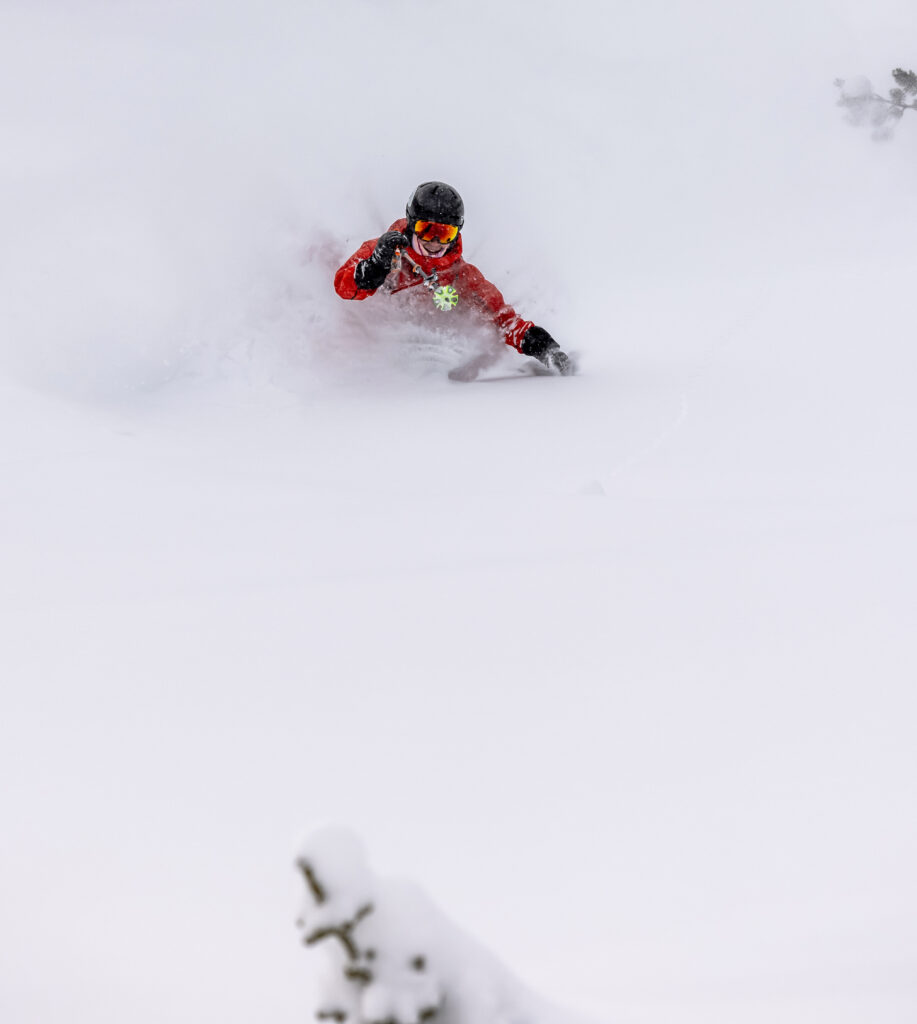
Preparation Is Everything
First, if you really want to have a good (and safe) time, it’ll require a lot of advance preparation. The time to lay the groundwork for your dream trip is now. Finding compatible and qualified teammates, picking dates that work for the whole team, acquiring permits, booking travel, building the requisite fitness, planning your route in a foreign zone, getting beta on a new snowpack, dialing in your gear and rope systems… the list goes on. Preparing for something you’ve never done before and venturing out into the unknown is a lot of work. But a lot of fun!
The second reason is a bit more sobering. With the way climate change is going, some of the snowfields, glaciers, peaks, and powder we fantasize about shredding just aren’t going to be there down the road. There are already places I’ve skied where I wouldn’t bother bringing skis again if I went back in the future. Unless you’re living under a rock, you’ve seen and probably felt the effects firsthand… (looking at you, denizens of Salt Lake).
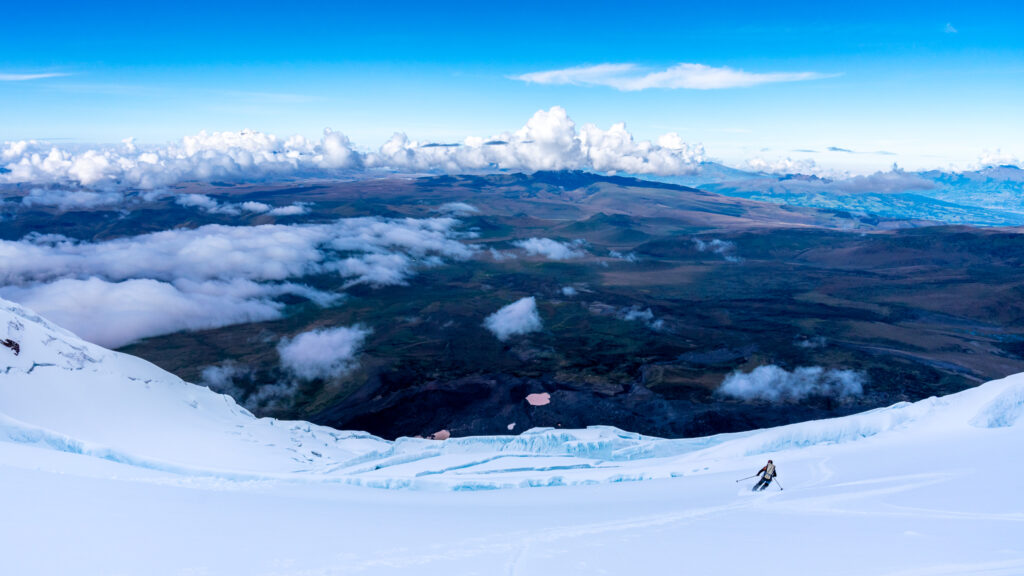
So, don’t sleep on your ski dreams. With that said, here’s how to deposit a truly unique backcountry experience into your lifetime memory bank. Let’s give you the tools to plan your dream ski expedition.
Showing Up
Perhaps the most important lesson I’ve learned over years of trying to ski peaks and lines in far-off places is that showing up is the most important part. You must be present to capture those magic moments when conditions, weather, skill set, and fitness all line up. Otherwise, you’ll be sitting on your couch watching someone else do it on Instagram. Yuck.
Here are some tips on getting there:
- Time is Money: Whether you’re heading to Alaska, the Himalaya, or flying south for Patagonian winter, build extra space into your travel timeline from home to destination. Chances are you’re committing a lot of time and money to the trip already. You might as well start it on the right foot, instead of rushing.
If you land in Bariloche and your bags are still in Buenos Aires, but your bus to the final destination leaves that afternoon, that’s going to cost you a bunch of money, time, and hassle. What if you realize you forgot something (like your Voile Straps, Ullr forbid) and need a day to shop in your last major city before you quest off onto a remote glacier?
You might just be plain tired, or jet-lagged when you arrive halfway across the world. Cutting your recovery time short or going without adequate rest isn’t going to help you ski from the summit. Do yourself a favor and slot an extra day at minimum (ideally two) into your front-end travel.
- Book Wisely: Speaking of extra time, never book a flight with less than 45 minutes between legs. Ideally, you want at least an hour layover between flights, so that if your first (or second, or third) flight is late, you still arrive in time to catch the next one. Even if sprinting from one terminal to another gets you on the plane, that doesn’t mean your checked bags did. Not much point in arriving for your dream ski expedition without your skis.
- No Stuff, No Send: Making sure your gear arrives is crucial. You must have a backup plan. This isn’t a vacation where you can grab another pair of swim trunks and a toothbrush and call it good. No gear, no expedition. Research your destination to know what your options are for replacing your gear. Sometimes the airline misplaces it, sometimes it falls off the back of a donkey into a river gorge.
In some cities like Kathmandu, they see a lot of mountaineers and have plenty of gear shops. That said, good luck finding skis (bring an extra pair with adjustable bindings for the team). You can also grab a luggage tracker like an AirTag and toss it in your checked bag. That way you can find it at the airport when someone else pulls it off the luggage carousel by mistake.
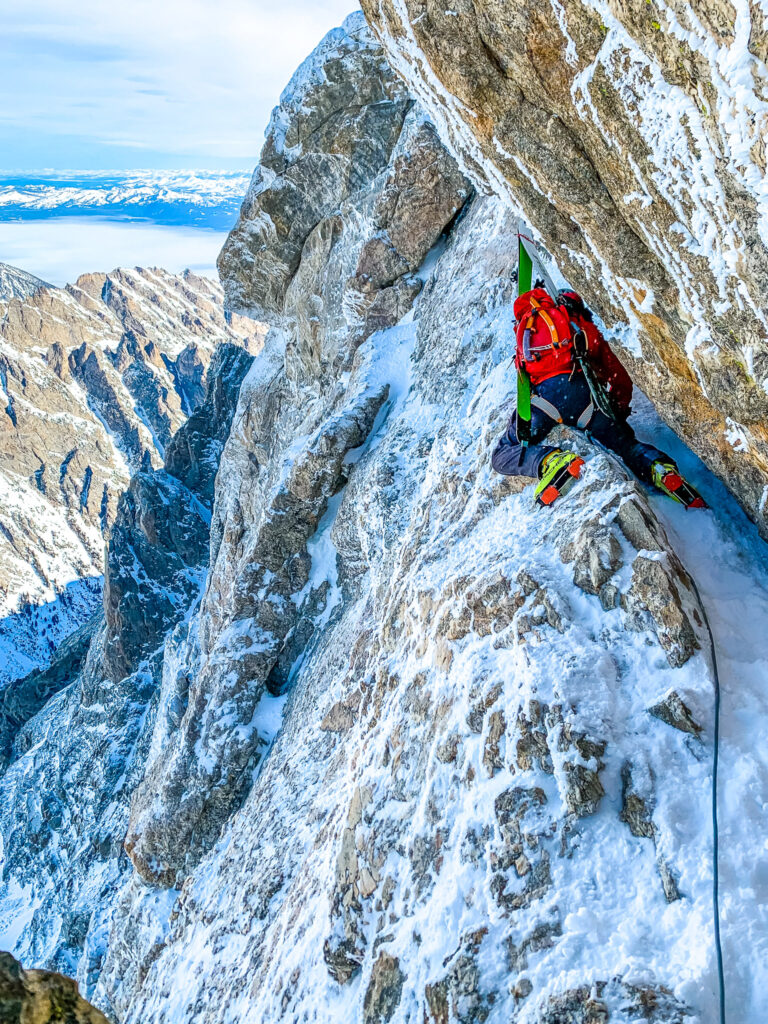
Dreams Versus Reality
The second important lesson I’ve learned from traveling for days (or weeks) to reach a ski objective is to always manage expectations and give yourself options. If you travel hundreds or thousands of miles, and put a lot of wear and tear on yourself and your equipment, in order to climb and ski a specific objective, which requires certain weather and conditions, and your body and mind are only human, what are the chances you’re going to get exactly what you want? (Hint: they’re a lot higher if you’re mentally and physically well prepared.)
Here are some pre-expedition tips to maximize your odds of feeling happy and satisfied when you head home. Even if you don’t get to have your cake and eat it too:
- Realism: Hope for the best, but expect the worst. This applies to your technical skills, experience, and what Mother Nature offers when you show up on location. Take the time to do your homework. Research the range of possible weather conditions in the destination area at the time of your trip, and read about the good, the bad, and the ugly from any past trip reports you can find. Assume you’ll encounter all of the subpar conditions or circumstances you read about and have to deal with them yourself.
Whether or not such information is available, sit down and imagine how you’ll feel if you show up, spend two weeks digging your tent out of the snow in a ping pong ball (or worse, getting rained on), read a few books to pass the time, and then fly home. Will you feel like you wasted your time? Or will you be happy that you spent two weeks out in nature? Happy that you explored somewhere new, instead of working your job or sitting on the couch at home? Consider your mindset and discuss the goals of the trip carefully with your partners before you commit.
Last year I spent over a month and thousands of dollars on a trip to Nepal. The trip didn’t result in a summit or skiing the line we wanted. And it rained a lot, the skier’s dream. I was disappointed at first, but now I understand that I was so incredibly fortunate. Fortunate to spend that month meeting new people, seeing old friends, and trekking, climbing, and skiing in the Himalaya. I came home safe. It would be hard to ask for more than all that. Setting a realistic baseline and adjusting your perception of the trip in advance will make you happier in the end.
- Order from the Menu: Perhaps my favorite personal tip that I’ve learned the hard way is to never box yourself into a single objective. Showing up with only one goal means that if conditions are icy or the weather isn’t right, you’re going home empty-handed. Having a single objective that you’re committing a ton of time, money, and effort to dramatically increases your likelihood of making poor decisions or justifying way too much risk in order to succeed on that peak or that line.
Instead, take a look around at the other exciting opportunities in the same range or general area as your ideal ski objective. This could mean trying something at a different elevation, different aspect, or even a different sport entirely.
I’ve taken my skis to the Alaska Range twice in the past two years. Both times I was disappointed by the skiing conditions. Most recently, I spent 21 days camping on the glacier in beautiful, sunny, warm, stable weather. It sounds great but it made for horrible skiing since there wasn’t any fresh snow. I found myself regretting that I hadn’t shown up more prepared to tackle some of the various fantastic ice and mixed climbing objectives nearby, instead of pinning all my hopes on a single ski line that never came into condition. (Still want to ski that line, though.)
Know Before You Go
This article wouldn’t be complete without getting into the nitty-gritty of how to plan your dream ski expedition & diving in on logistics. Here are some tips I wish I’d known the very first time and remembered better on subsequent trips:
- Fun-ness: The best way to maximize the fun-ness of your trip is to go with people you are going to have fun with. This means knowing who you are getting into a tent with before you go. Even if you are sharing a more luxurious sleeping arrangement like a motel room, Airbnb, or adventure van, keep in mind that traveling with someone will always bring out their true personality more than a casual daytime hangout. That little thing they do that annoys you, but isn’t a big deal? It’s going to be a lot more frustrating after you’ve been working hard climbing a mountain all day, dragging a sled across the glacier, or cleaning pots and pans with snow and a raggedy sponge. Be prepared for this and choose your expedition partners carefully. Not on a whim or just because you need one more on your team.
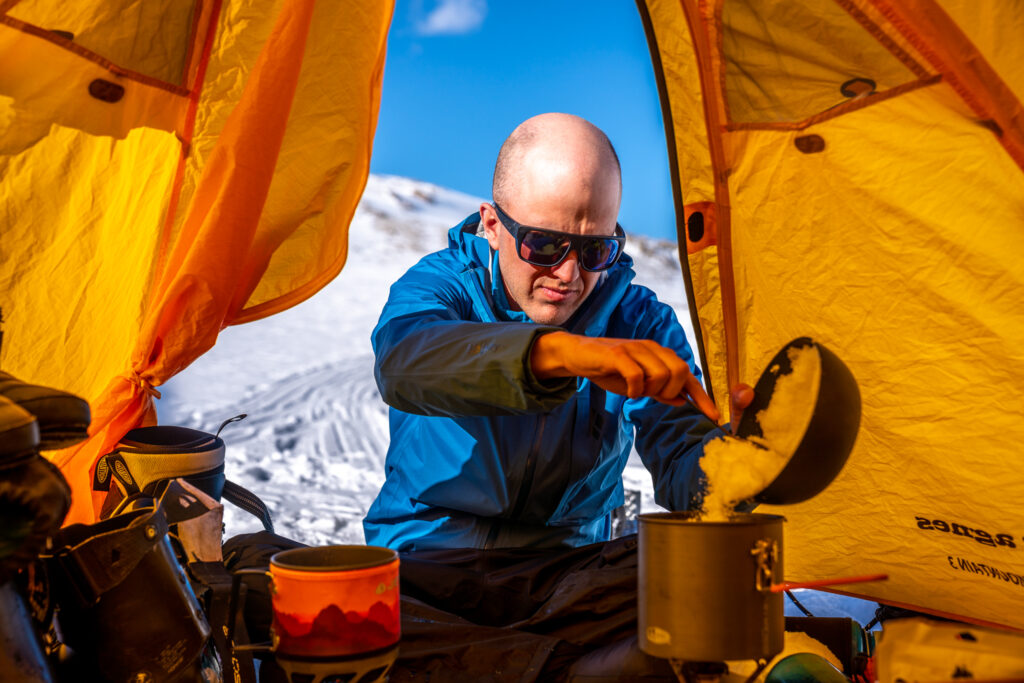
- Current Conditions: There are a lot of resources out there for determining the current conditions before you board the plane. Perhaps the best way is to make friends who are local guides or recreational crushers in the area and are happy to share the current beta with you. This may require the time and patience of showing up to an area multiple times over the years.
Barring this convenient and free insider information, you can try contacting local organizations. This could include the park service, office for protected wilderness areas, or calling local guide services and expedition outfitters with your cheeriest phone voice to see if someone will share detailed information with you. When I go back to Alaska, I always call the National Park Service ranger station and Talkeetna Air Taxi, to see if the local rangers or pilots have a current conditions report.
- Weather: As far as weather during the expedition, I will no longer go on serious or committing expeditions to remote mountain areas without hiring a professional weather forecaster who has experience and is going to send detailed forecasts curated specifically to my trip plans. Getting caught in a compromising position in bad weather that you didn’t see coming because you’re relying on a piss-poor auto-generated weather forecast from an online or public source is a great way to put yourself in an emergency rescue (or death) situation. Even here at home in the Tetons, a well-serviced and populated area, I find that the free online weather forecast is frequently wrong in a material way. Why would I trust it in Alaska or the Andes? Some may say hiring your own forecaster is overkill – I say it’s money well spent.
- Route Planning: Reading the guidebook or trip reports is a great way to get a general sense of the area or your route, but when you’re out there in a remote location where you could get caught in a whiteout, it’s not enough. My favorite way to plan routes and take them with me is to first plot the route on Google Earth (I recommend downloading the desktop app). This allows me to see all of the major terrain features in 3D, and even get a sense of where there might be crevasses for glaciated travel. Then, you can export the route you plotted to Gaia GPS to save for offline navigation on your phone. I learned how to do this from IFMGA guide Mark Smiley, and you can take his Worldwide Smartphone Navigation course on Mountain Sense for just $19 (you can also find a ton of other good ski alpinism-related content from Mark).
Invest in Success
My final tip to execute and plan your dream ski expedition in style is to invest in your success. This does not mean only from a financial perspective. Your safety, margin for error, and outcome are directly proportional to how much time you spend preparing your body, mind, and skill set for the challenge. You’ve done most of the hard work in advance. Getting started on your expedition should be fun and exciting, not scary or physically torturous because you are underprepared.
- Getting Technical: it goes without saying that you should have the requisite technical climbing, skiing, and rope skills such that your objective is within your abilities, even if it’s going to be very challenging. Is there 4th or 5th class climbing en route to your ski line? How much time did you spend practicing roping up for glacier travel beforehand? Do you know how to pull your buddy out of a crevasse by yourself? Have you done it? What if you have to put your partner on a ski belay because there’s unexpected ice in a no-fall zone?
An important consideration when you plan your dream ski expedition to an exciting new zone is that you may have to evaluate an unfamiliar snowpack with limited information. This will take a bit more than a Recreational Level 1 avalanche course. Are you confident in your own assessment, without the local avalanche forecast popping into your email inbox daily? Do you know how to look at the weather history for the season in a remote location? Can you identify weather patterns that may have created problem layers in the snowpack, and then look for those layers in a safe area when you arrive?
And what about your wilderness medical skills? The best thing to do here is think through the possibilities, and then practice the skills you may need consistently in the months leading up to your trip. Schedule a weekly meeting time with your partners and make a plan for what skills you’re going to practice at each meeting. Watching a video demo online and practicing indoors is a good way to start. That said, going out into the mountains in winter and simulating the conditions on your trip (cold, snowy, wet, steep, etc.) is better and should be required for all team members.
- Experience: Another great idea is to select some less committing objectives that offer similar conditions or challenges to your ultimate goal. Practice on those peaks beforehand. Before going to Denali the first time, I spent 5 days camping, skiing, hauling sleds, and roping up for glacier travel on Rainier. If you don’t have a good time on the warmup objective, that should tell you something about your bigger plans.
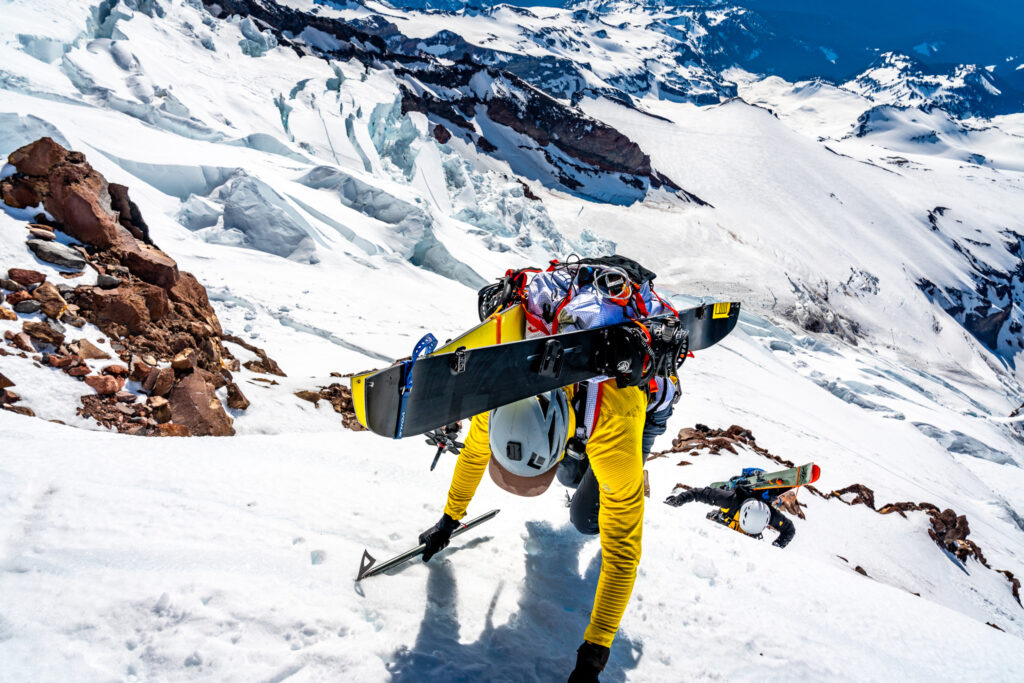
- Money Talks: As if the ski gear, climbing gear, winter camping gear, portable solar panels, and high altitude meds weren’t enough, there are a couple more things worth investing in for a remote expedition to a high peak. To get ahold of rescue services in the event of an emergency make sure to bring a satellite-based communications device. I like to use an inReach Mini (best packability and weight savings) or ZOLEO device (allows longer messages).
Speaking of rescue services, you’re going to want trip and rescue insurance. That way you’re not out thousands of dollars if you have to cancel the trip at the last minute or get flown out in a helicopter. The most commonly used option for mountaineers is Global Rescue, but I’ve also used Ripcord. Do your homework here and compare prices and terms before buying! Call and talk to a real person to make sure you’re getting the protection you need.
- Fitness: I saved the best for last. Barring a severe injury or other major catastrophes, there’s not much worse than going through all of the planning, expense, and time commitment of your dream backcountry ski expedition, only to bail on your objective because you showed up without enough gas in the tank to finish in style.
Training to feel super fit when you arrive at your destination is both fun and super rewarding. It turns out a lot of the training for ski touring is… well, ski touring. But there’s a lot more to it. You’d also be well served to dedicate time to flexibility, core stability, coordination, agility, maximal strength, power, etc. The list goes on. Being underprepared from a fitness standpoint may result not only in turning back from your objective but also an increased likelihood of injury in a remote wilderness setting.
I recommend checking out Uphill Athlete’s free online content and reading their book. This will give you a better idea of how to maximize your performance. Start training now, not the month before your trip. Of course, a pair of ultra-lightweight Voile Objective skis wouldn’t hurt your chances either.
Now Go Plan Your Dream Ski Expedition
I hope this is helpful for those who are still reading and interested in making your dream trip happen. Feel free to reach out to me @mtniain on Instagram with specific questions about any of these ideas, or the places I’ve skied. See you in the backcountry!
About The Author
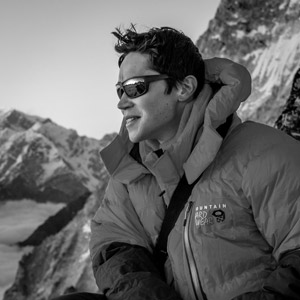
Iain Kuo
Location: Jackson Hole, WY
Top Gear Picks: Objective BC 171cm
Website: www.mtniain.com
Instagram: @mtniain
Iain Kuo is a ski mountaineer and professional photographer based in Jackson Hole, Wyoming. After quickly becoming disillusioned with a career in finance, Iain left New York City with a one-way ticket westward and has never looked back. Since embracing his passion for the mountains, he has climbed, skied, and photographed expeditions in places such as Patagonia, Nepal, Kyrgyzstan, and Alaska.
When not traveling or working behind the lens, Iain can be found exploring the wild landscape of the Teton Range and planning for the next adventure. He also enjoys running, hiking, rock climbing, backpacking, and most activities that involve spending time in nature with all others who share a love for the great outdoors. Iain lives with his girlfriend Kira, who skis faster than him, and their cat Teddy the Tiger, whom he's mildly allergic to but loves anyways.
Share this Post



